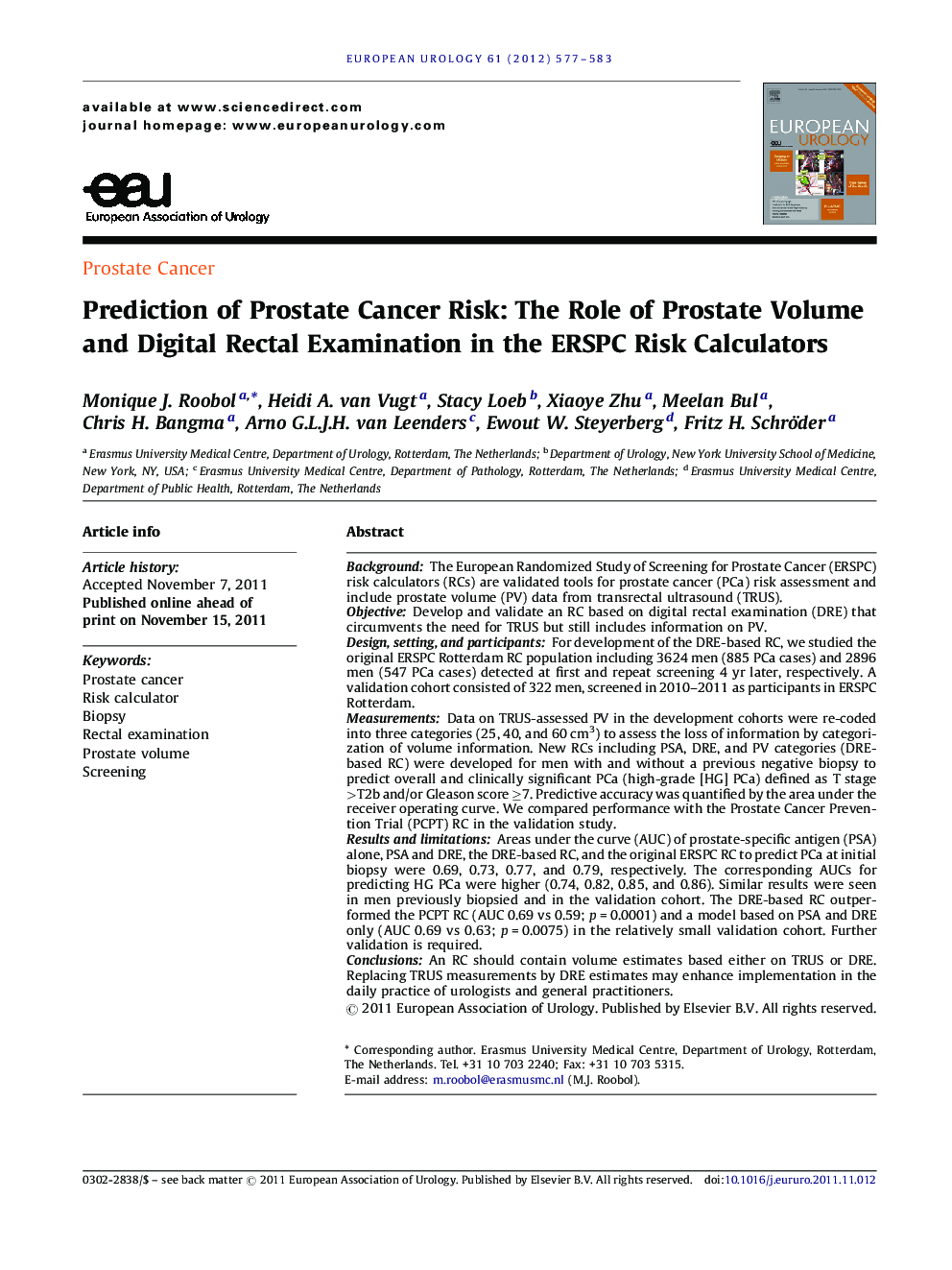| Article ID | Journal | Published Year | Pages | File Type |
|---|---|---|---|---|
| 3922846 | European Urology | 2012 | 7 Pages |
BackgroundThe European Randomized Study of Screening for Prostate Cancer (ERSPC) risk calculators (RCs) are validated tools for prostate cancer (PCa) risk assessment and include prostate volume (PV) data from transrectal ultrasound (TRUS).ObjectiveDevelop and validate an RC based on digital rectal examination (DRE) that circumvents the need for TRUS but still includes information on PV.Design, setting, and participantsFor development of the DRE-based RC, we studied the original ERSPC Rotterdam RC population including 3624 men (885 PCa cases) and 2896 men (547 PCa cases) detected at first and repeat screening 4 yr later, respectively. A validation cohort consisted of 322 men, screened in 2010–2011 as participants in ERSPC Rotterdam.MeasurementsData on TRUS-assessed PV in the development cohorts were re-coded into three categories (25, 40, and 60 cm3) to assess the loss of information by categorization of volume information. New RCs including PSA, DRE, and PV categories (DRE-based RC) were developed for men with and without a previous negative biopsy to predict overall and clinically significant PCa (high-grade [HG] PCa) defined as T stage >T2b and/or Gleason score ≥7. Predictive accuracy was quantified by the area under the receiver operating curve. We compared performance with the Prostate Cancer Prevention Trial (PCPT) RC in the validation study.Results and limitationsAreas under the curve (AUC) of prostate-specific antigen (PSA) alone, PSA and DRE, the DRE-based RC, and the original ERSPC RC to predict PCa at initial biopsy were 0.69, 0.73, 0.77, and 0.79, respectively. The corresponding AUCs for predicting HG PCa were higher (0.74, 0.82, 0.85, and 0.86). Similar results were seen in men previously biopsied and in the validation cohort. The DRE-based RC outperformed the PCPT RC (AUC 0.69 vs 0.59; p = 0.0001) and a model based on PSA and DRE only (AUC 0.69 vs 0.63; p = 0.0075) in the relatively small validation cohort. Further validation is required.ConclusionsAn RC should contain volume estimates based either on TRUS or DRE. Replacing TRUS measurements by DRE estimates may enhance implementation in the daily practice of urologists and general practitioners.
